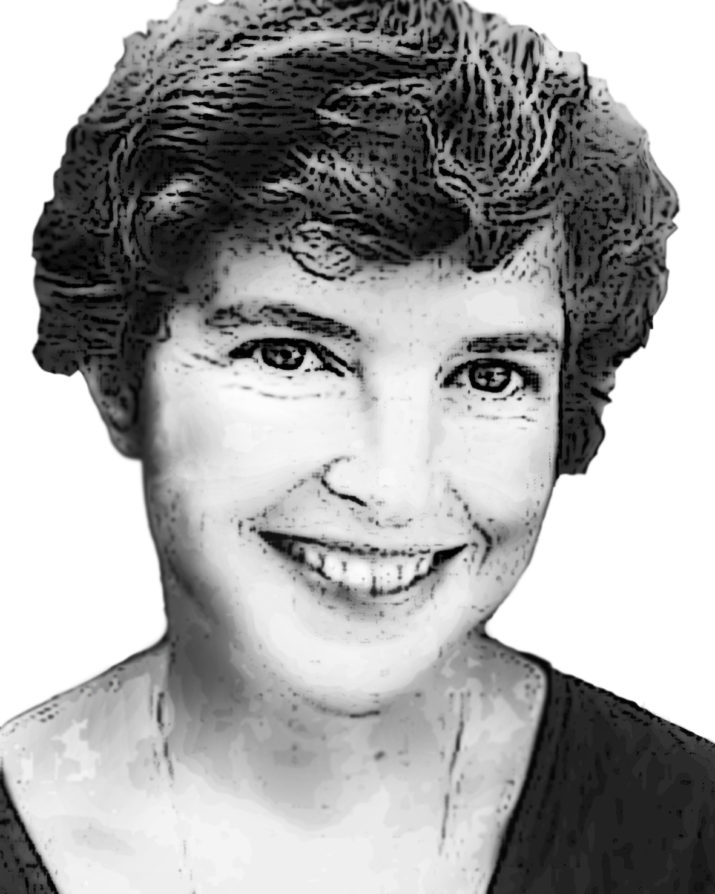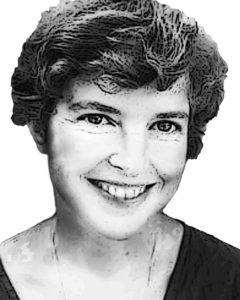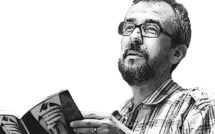

This is part of our feature on Poets and Power: Language of Resilience from Central and Eastern Europe
EuropeNow Campus recently spoke with Meghan Forbes, who teaches courses on Central European literature at the University of Texas at Austin, among myriad other literary and intellectual endeavors. Meghan described the urgency of engaging students with questions about the meaning of “Central Europe” as a category, reflected on a digital mapping project she ran in one course, and talked about some of the challenges and opportunities of teaching at institutions with more, uh, varied political atmospheres. She also shared a pair of syllabi for the courses described below, so feel free to peruse them to see how the digital mapping project, for example, fit into the context of the course as a whole.
—Jake Purcell for EuropeNow
EuropeNow First, can you just give our readers the name and a super brief description of the courses that you’ve been teaching recently at the University of Texas at Austin?
Meghan Forbes This semester, I am teaching a survey course on Central European literature of the twentieth century that interrogates the construct of “Central Europe” itself and instrumentalizes conceptions of the region towards literary analysis of prose, poetry, and essays. Last semester, I taught a course on periodical print culture in the interwar avant-garde, looking in particular at the ways in which the Czech, Yugoslav, Polish, and Hungarian magazines were used to forge networks with peers across Europe that broke down distinctions of center and periphery. I also teach Czech language courses: currently first and third year.
EuropeNow I think I mentioned to you that the theme of this issue of EuropeNow is the relationship between literature and politics in Eastern and Central Europe, and the course that you’re teaching this term sounds like it spends a lot of time at the intersection of those two topics. What are some of the key questions that you hope your students will grapple with in the course of the semester?
Meghan Forbes Of course, the history of the long twentieth century in Europe is inherently political. Last semester, especially post-election, this made for some rather trying moments in the classroom (not to mention on our Canvas discussion board and in my office hours). It was also my first semester at UT-Austin, which observes the state’s Campus Carry law and which has a drastically different culture than the other universities—private and public—with which I have been associated. I endeavored to make productive comparisons between conditions in the interwar period that helped bring about World War Two, and the circumstances that have led to a rise of nationalism and xenophobia today in Europe and the United States. While some students appreciated the opportunity to see contemporary applications in our mostly historical work, some, I think, felt resentful of these conversations, which shut down the opportunity for dialogue. While it is no less difficult to keep contemporary politics out of the classroom this semester (to my mind there are an unnerving number of uncanny comparisons to be drawn with Alfred Döblin’s Berlin Alexanderplatz, or Zofia Nałkowska’s Medallions, for instance), I have endeavored to do so for the most part—whether right or no—to make sure that my students with drastically different opinions than my own remain (hopefully) receptive to the larger skills I aim to teach in the classroom through careful textual analysis. That is, in the literature classroom, critical thinking and skepticism, the ability to map out moral and ethical boundaries, and to interrogate how “legality” operates within systems that are inherently set up against the basic human rights of certain citizens (think: Hannah Arendt’s banality of evil).
EuropeNow I’m really interested in some of the “active learning” elements of your course on the Avant-Garde in Europe, especially the digital mapping component. How did you hope this project would enhance the course? Did folding in digital elements enhance the course in a way that other research or presentation formats would not have? Were there outcomes that you didn’t anticipate? Or things that you would do differently next time?
Meghan Forbes I had envisioned the digital mapping component of my course on interwar avant-garde periodicals to be a way for students to collectively visualize the connections across geo-linguistic boundaries that I highlighted in class all semester. To a large extent, this goal was accomplished, and I felt that students enjoyed learning to use Kumu to create their maps. It was also my intention that this would be an opportunity for students to work with periodicals outside of the Central European region, to hopefully map connections as well with magazines further afield. Towards the end of the course, we looked at related print culture from North and South America, China and Japan, for instance. And at the Harry Ransom Center on campus, we had the opportunity to look at some important periodicals created in New York, such as Fire!!, a (one-time) periodical of the Harlem Renaissance, The Masses, a Socialist monthly, and 291, a large-format art publication edited by Alfred Stieglitz. While the latter did make it into the final mapping project, thanks to the Francis Picabia connection (a popular figure in the course), perhaps transcontinental connections were introduced too late in the course for students to really have the time to incorporate them into their digital projects. In a later iteration of this course I would like to work on ways in which to better integrate a more fully international discussion of the interwar period (that would necessarily reach beyond the bounds of my own area of expertise), so as to map a truly global series of networks in the interwar avant-garde.
EuropeNow I have a couple of practical questions about implementing something like a digital mapping project. Did students come in with the technical skills necessary, or was teaching them a hurdle? What resources at UT-Austin made a project like this possible? What would you need to recreate something similar at another institution?
Meghan Forbes It was not a requirement that students enter the class with any particular set of digital skills, and this was not a particularly significant teaching hurdle thanks to the expertise and hands on assistance of our Slavic and Digital Scholarship librarian, Ian Goodale. Ian visited my class a couple times throughout the semester and maintains office hours in our department, so I felt that my students (as well as myself!) had the necessary support in learning how to use the various platforms (namely Scalar and Kumu) utilized in the classroom. This speaks to the real need for knowledgeable university librarians in specific subject fields, as well as burgeoning digital technologies. The latter skill set is often not shared by department faculty; the digital component of my classroom could easily be re-created at another institution, but not without the necessary library staff!
EuropeNow Zooming back out, we at EuropeNow are obviously invested in Europe as an idea, and how that idea is defined and shaped. Your courses seem particularly well suited to address questions about who gets to participate in those questions and the intellectual spaces in which they get asked. What makes students respond to these questions? Do they still have urgency for students in the U.S. today?
Meghan Forbes In the course I currently teach on Central European literature we started with the question of what Central Europe actually is (reading Milan Kundera’s “Tragedy of Central Europe” and several of Timothy Garton Ash’s important essays on the subject in the NYRB as a launching point). Our discussions vacillate between various conceptions of the region (in the twentieth century) as a geo-political construct (which includes different countries depending on which map you look at or to which scholar you refer), a shared culture across small nations, or a group of fierce individuals resistant to any idea of a shared culture. I also ask my students to constantly question: who and what is being left out? In an already arguably marginalized field (i.e. non-Russian Slavic literature taught in translation), what demographic is nevertheless represented with some plurality of voices, and for whom do we have to search harder to find? These sorts of questions—which revolve around national, ethnic, gender, and religious identity—are no doubt of urgency at this moment in the United States. Ultimately, and as I touched on earlier, it is my primary goal as a literary scholar and humanist to give my students a structure and a vocabulary for thinking about their contemporary moment, and their position vis à vis the society in which they live. I hope they come out of my classes better at asking questions and thinking critically, and able to take an ethical stand with confidence, because they found models for that in the works we read and discussed together.
Meghan Forbes is Czech Lecturer at the University of Texas at Austin. She is also a Visiting Scholar at NYU’s Institute for Public Knowledge for the 2016-2017 academic year. Her recent articles, essays, and translations have appeared in Umění/Art, post at MoMA, and Words without Borders. Her essay on the life of Lucia Moholy for the Michigan Quarterly Review has been nominated for a 2017 Pushcart Prize.
Jake Purcell is the History in Action Research Associate at the Council for European Studies and a Ph.D. candidate in medieval history at Columbia University.
Photo: Meghan Forbes, Private
Published on March 1, 2017.




